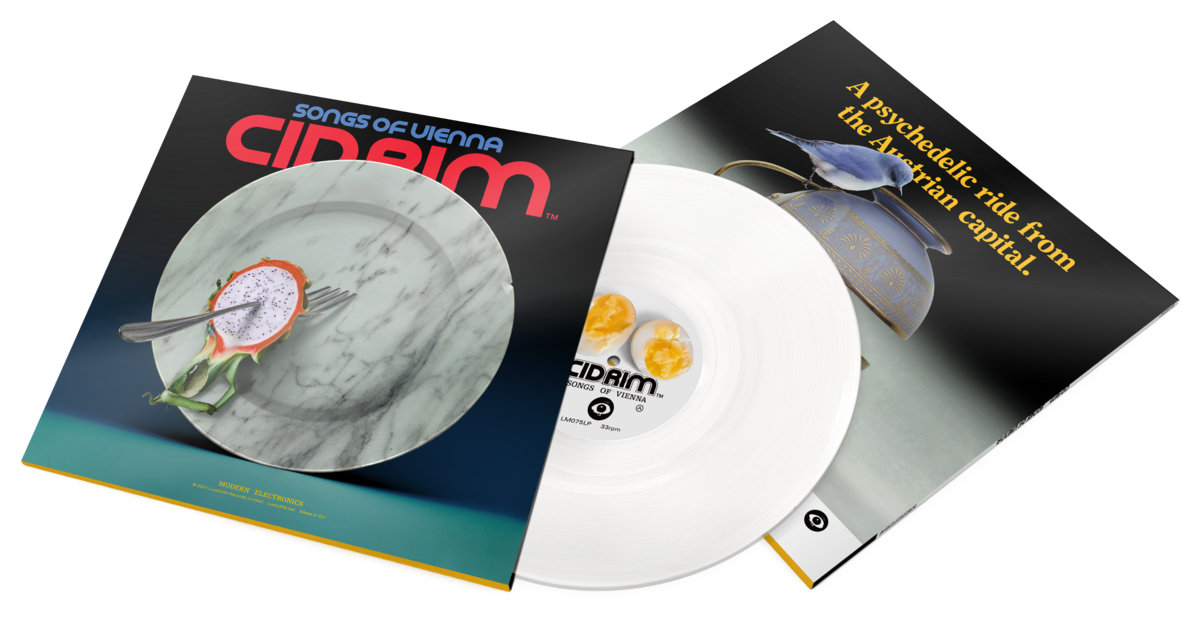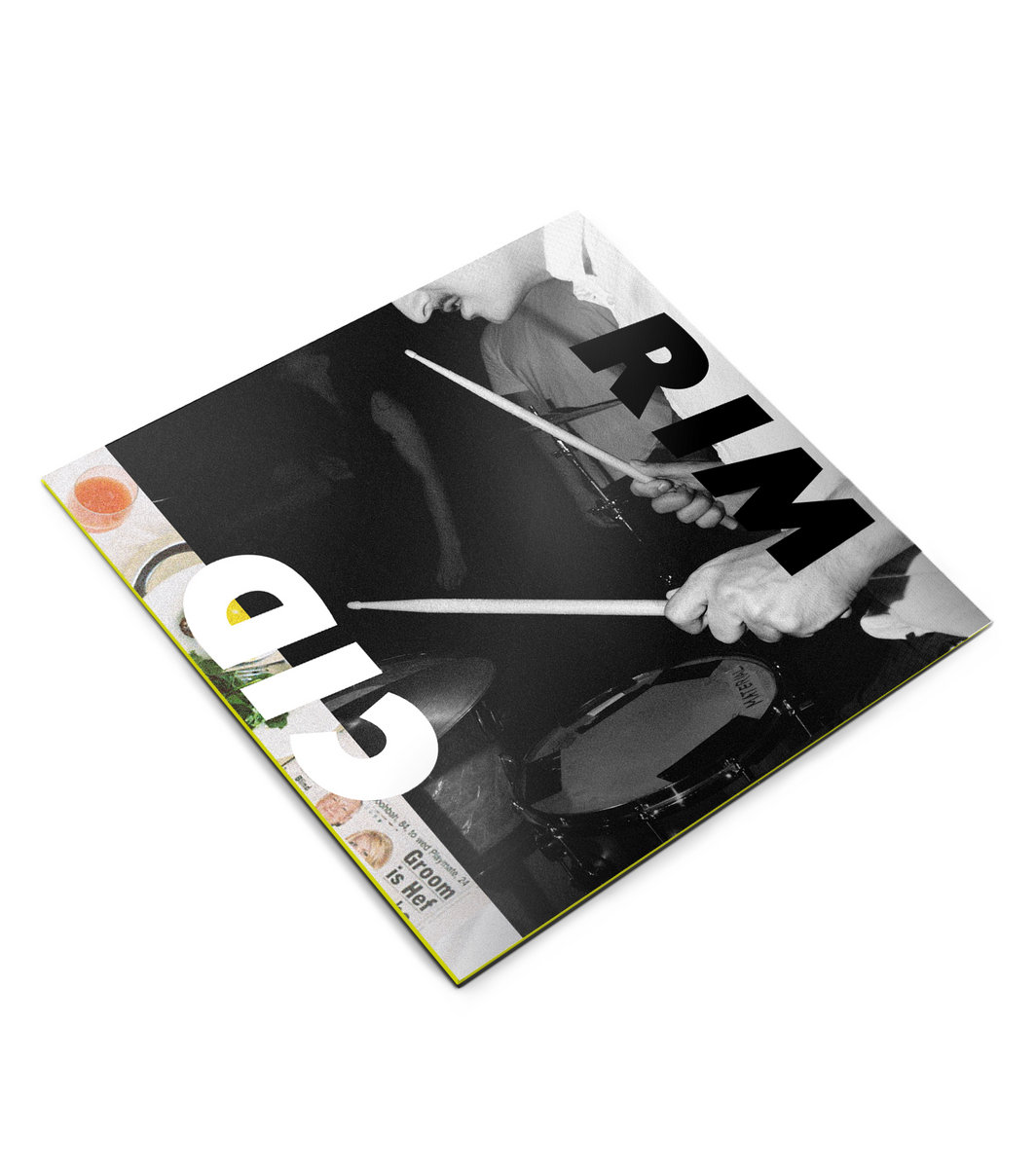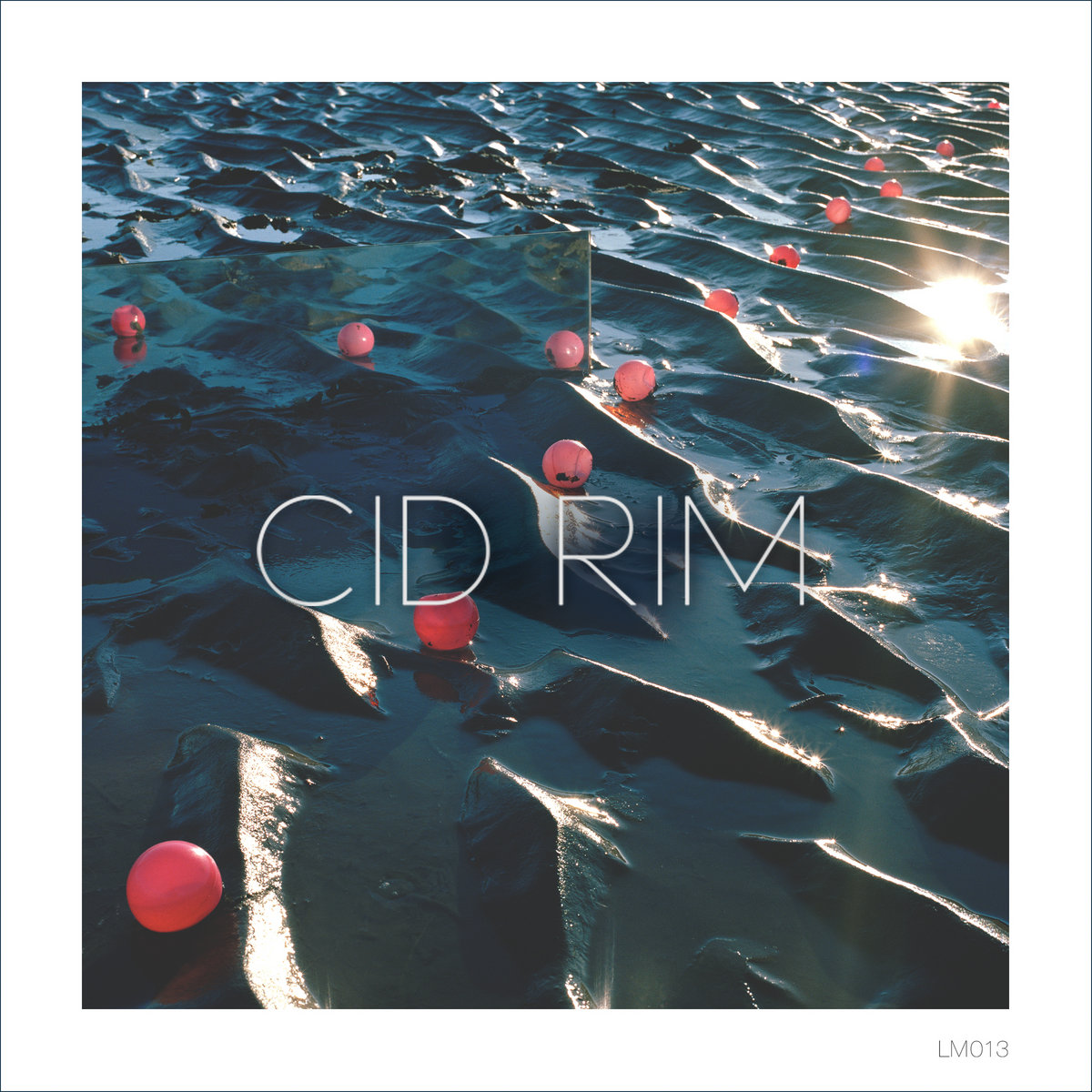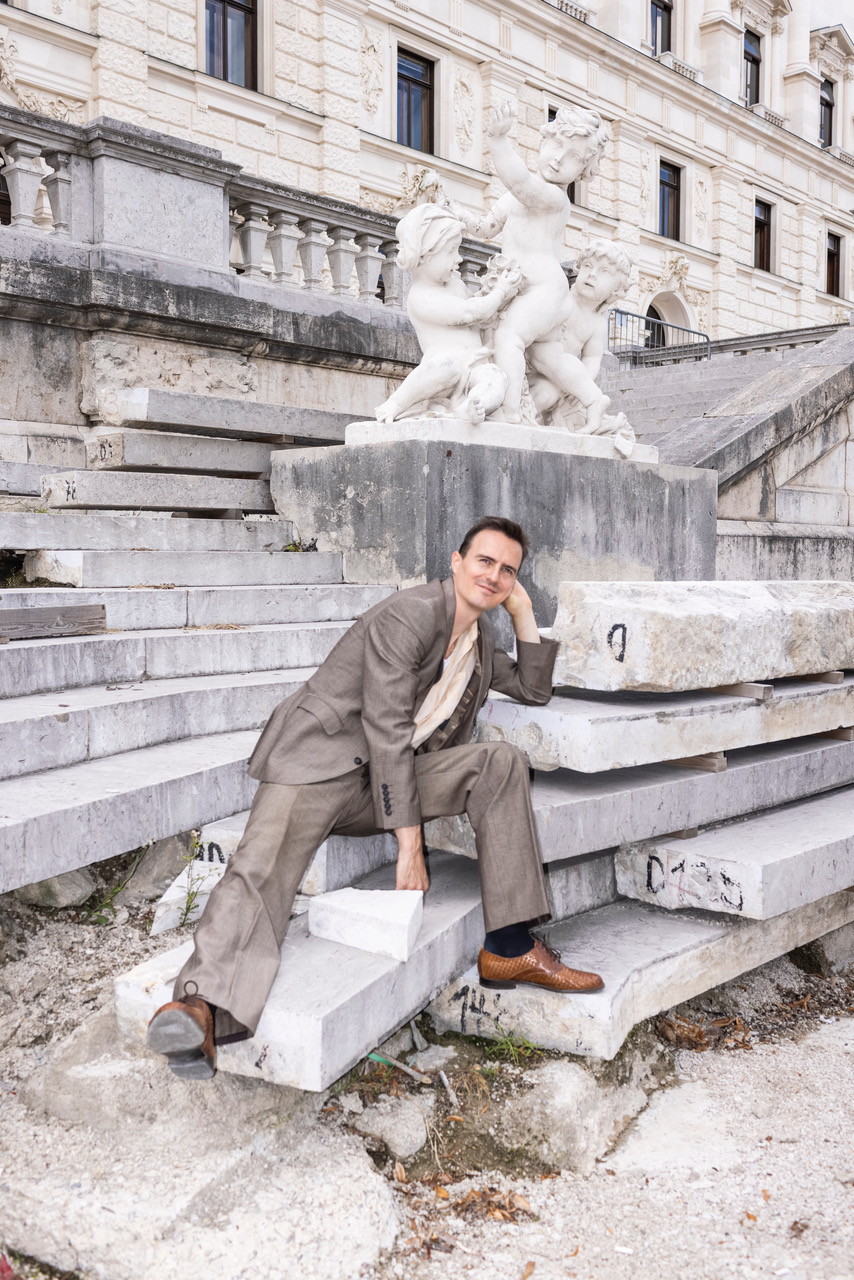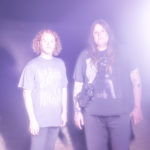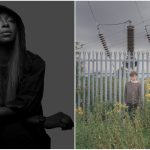CID RIM may have moved to London soon after his second album (Material) took off, but one thing’s remained in his rearview window ever since: Vienna. More than just a mere hometown, the Austrian capital is where the producer and a couple ride-or-die cohorts (Dorian Concept, The Clonious) brought rap and club music together in a bathhouse beneath a local theme park.
“I’m grateful for growing up there,” Clemens Bacher says of the seminal party, The Loud Minority. “The confidence it gave us to kick off a ‘scene’ literally in the basements below all these historic institutions.
He continues, “As a man who has now left, I’m considering what Vienna means to the world; this place that wins awards for ‘best quality of life’ doesn’t necessarily ask the right questions about why it’s been able to remain a safe haven for social democracy and ‘high culture’. This album explores all this as best I can, as someone who will always have the city be a part of me.”
In the following exclusive feature, Bacher takes us on a tour of the entire album, starting with one of its cornerstone cuts….
“PAUL’S”
This is the first track for a reason; I think it’s one of the album’s defining moments. It started in my mate Paul’s studio (hence the name) with a borrowed SH-101 from the room next door. I made a little beat — half recorded, half programmed material — and then with my left hand on the filter of the SH-101 and the right hand on its keys I just started playing these melodies.
It felt like I’m just the passenger, or a medium, that transports these lines out to the real world. I overdubbed them each with three or four voices and that was it. Once the sketch has already been lying around for a bit I decided that the unapologetically positive nature of those melodies were screaming for even more drama so I put a choir on top. It’s actually all real people: friends from Vienna, professional singers, my girlfriend, etc. I just kept on adding people to the choir until it felt really big.
“PURGATORY”
I think this was the last one I made on the album. I always loved that word: “purgatory”. The meaning, the sound of it, the concept of being inside this weird in-between place, like being in custody waiting for a trial or somthing. Outcome uncertain.
I made the sound almost entirely with this really bad early 2000s Neptunes aera Roland synth JD-Xi. The focus was more on the writing really. Restricting myself to only using very simple harmonic ideas, I tried to make the song interesting and give it depth in other ways. It’s all about the rhythm of the individual layers. The arpeggio is in a three bar loop. The claps are appearing to run against it, but never really get away because of the nature of the three bar system. The background vocals basically do the same thing but slower, also appearing to run away from the grid, then meeting back every second round of the loop. It’s all about rhythmical songwriting in this one, I guess.
I remember when I was teaching drums and some kids would want to learn Beatles songs and at first you think they are all super simple until you try to play the exact arrangement. Only then do you realize there are so many time changes, added fourth notes at the end of a loop, and other rhythmical obstacles you don’t realize when you’re listening alone. That’s what I tried to achieve.
“FRIDAY”
Wow, I barely remember how that one came together. Very fluidly and quickly, I guess. Listening to it now, I think I hear the Arturia Microbrute synth and I definitely hear the Moog Grandmother.
The idea behind it was basically to try to build up as much energy as possible with the crescendo, constantly adding layers. At the same time I wanted to hammer the main synth hook into the listener’s head to create a very clear harmonic world, only then to disappoint or suprise the expectation by reharmonising the melody in the last beatless part of the track. I deliberately used fourths voicings in the reharmonization to create a calming feeling in the end that also has a hint of uncertainty in it. Like saying “I think I’m pretty sure.”
“LAST SNOW”
The realisation that at some point in the future I won’t be able to go skiing anymore without that feeling of future nostalgia that I’ve had for a couple of winters made me write this song. It’s a really sad feeling, but I’m on top of my favorite mountain on the most gorgeous day. Mixed feelings really.
Production wise, the whole thing was pretty intentional from the start. I wanted to create something that reflects this emotion and that’s very 2021 as well as 1974 at the same time. So not only the tone of harmonies were important but I think more so the surfaces, getting the balance right between fancy soft synths — I think it was a ton of “Massive X” layers mainly — and running them through old analogue equipment like the Roland Space Echo or tape emulations.
In the last bit you can hear a white noise sound moving rhythmically from left to right on every beat. That’s me trying to replicate the sound underneath my feet when I’m skiing. The first airy soft synth melody is supposed to sound a bit like whistling. I love whistling when I’m skiing. It’s all very on the nose really; haha.
“RAIN”
I love ballads — one of my favorite types of tracks to make. I think their origin lies in my favorite Boards of Canada tracks that influenced my taste a lot in my early years. That and my soft spot for almost cheesy emotional film scores, I guess.
The whole song exists of four simple chords and one melody. The melody moves through all the registers, climbing up all the way and down again. It’s not about what synth it is; in this case, I think it’s all about the automations in there to make it feel as lively as possible. I made a ton of layers of recorded automations, with my fingers on the knobs. Always recording the entire song. And once I started recording the choir for the other songs, this was a very easy choice to have a choir here too. I called my friend Eva, a.k.a. Lylit, to record the vocals and she killed it with her wavy angelic solos on top of the synths.
“GET UP”
Literally an alarm song. My girlfried has it as an alarm on her phone, so I’ve woken up to this every morning for over a year. The song started in my head while I was dreaming, or more like being half awake in the middle of the night. I just had this bendy melody in my head that ended up being the start of the song. I mutely sang it in my head and knew I needed to remember it. I also knew if got up and played it on the piano to remember the notes, by the time I got back into bed I’d be too awake to sleep.
The next morning I woke up, went straight to the piano, and luckily I had remembered the notes. The melody is a funny one, because it already completely informs the chords underneath — at least in my head — so those were there from the start too.
Since the whole topic was already circling around sleep and getting up it was also only logical to record our old school Braun alarm. My grandmother had one, and every other grandmother in Austria and Germany, I guess.
The drums are recorded from another session. The ’80s drum computer loop is from a collection of old sampled drum computer loops that Legowelt put on his hompage for free a while ago. So thank you Legowelt, you’re a legend.
“THE MARROW”
London in December is the worst. It’s literally raining every day. At the time I made the song I was living in a ground floor flat that was really cold and I absolutely hate being cold. I also didn’t really know where this album was going or how it was going to come out, so there was a lot of negativity in me when I made this track. It’s probably the angriest track I’ve ever made.
I was about to return the Microbrute after a month and switch it to another cheap synth, so I thought I’d give it one last go and discovered the external audio input. I plugged the output to the input and recorded all these otherworldly screaming feedback bass notes for an entire hour, so I had loads of material to work with. I went into my drum recording library that I’d built over the years, and found a sound that sat right between feeling organic and digital. Or let’s say organic with a robot twist. Lots of the drum layers are time-stretched to create these slightly off-putting artifacts. Think of these AI artist machines that you feed with visual information – like let’s say the word “human” – and then they paint a picture that clearly looks like a human but in the weirdest and scary way.
Again here the disonant choir was a very obvious choice once I had access to it. And the jazz flip in the end is just a happy concidence really. I wasn’t brave enough to keep the listener in this dystopian vibe for the entirty of the track so I was looking for something to break it up with. I found this completely different jam session project where I had sessions with lots of jazz players in Vienna. I sampled that bit, pitched it to the right note and tempo, and that was it.
“WE DRUMS TOO”
I made this track at the very end of working at my friend Dorian Concept’s studio. I wasn’t happy with what I had created that day, so I said to myself, “Come on; make one more little loop within the next half hour and then go for dinner with a friend.
I recorded the first three chords on the piano with my phone, two simple bass notes from a Kontakt electric bass preset, and a couple of drum sounds sampled from my very first drum set. I plugged in the mic, opened up Auto-Tune, and made a long effect chain behind it so the delay and the compressor are kind of feed-backing, but sort of in equilibrium. I freestyle-scatted the first take and that was the track, and then went out for dinner. Sometimes the muse rewards you for not giving up earlier.
“TOO LONG”
I mixed Denai Moore’s album a while ago. We had mixing sessions in Vienna and a couple in London at Red Bull Studios. I was in there a couple of days in a row, became friendly with the studio manager, and he gave me one new synth per day, just to check out.
At the end of the mixing session for Denai, the studio manager came in with this massive monster of a new Roland synth called JD-XA. Just knobs and blinking stuff everywhere, and it took me a while to just strip everything back to one good square wave and a filter. Then I recorded this bass pattern that’s always the same note in different octaves and layered it with a couple of bass sounds and synth lines in the upper registers.
After a while Denai said she had something, and she recorded the whole hook in one go. I knew I was onto something immediately, and the next day I spent a couple of hours on the arrangement and mixing and that was the core of the track. The drums consist entirely of very short decay synth notes, amplified and distorted in different ways, so some sound like bass drums and some like snares.
Basically the whole song consists of what came out of that synth in the last hour of our session. Later I changed the lyrics a bit and recorded the vocals myself.
“POLARIZER”
That day I worked from Dorian Concept’s studio in Vienna, he had this gorgeous old Jupiter with a lot of character. I came up with the main big part of the track there and recorded loads of different octaves and takes of similar sounds and lines. I spread it all out in the stereo image and layerd it again and again untill it sounded almost too big, annoyingly screamy. Then I distorted every track.
On the way home I listened to the sketch and thought “well that’s bit much,” but since everything was recorded and nicely lying in the project already I thought there could be way of not changing much, so I sat down at the piano and played the same chords in the softest way to create maximum contrast. Then I played them in half tempo, recorded that, and that’s basically the instrumental.
With that amount of contrast, the topic of the lyrics was quite obvious. The polarization in our society is also something that worries me and I was thinking about that a lot at that time.
“BLAME”
Another worrying topic: the seemingly never-ending chain of men seeking the love they haven’t gotten from their fathers in the validation of their bosses within the world of economy and finance jobs. It creates a downward spiral that forever binds them to the rules of profit and capitalism, but the numbers can never satisfy them really. All they need is a hug from their dad.
Musically it’s all about having MIDI notes played through a real synth while having both hands on knobs when you’re recording, to create this kind of restlessness that feels like it could explode or go wrong any second. I pictured a guy in a suit running around the city in London or Wall Street in NYC, looking for his next quick fix of validation — like a drug addict, kind of in a Safdie Brothers way if that makes any sense.
All drums in this track are either recorded or short decay synthisizer noise sounds. In the end I put the whole song through an onboard Reason pitch shifter, that has a feedback function. It’s called Polar Dual Pitch Shifter and it’s amazing; I love it. The whole album was made in Reason.
FURTHER LISTENING
